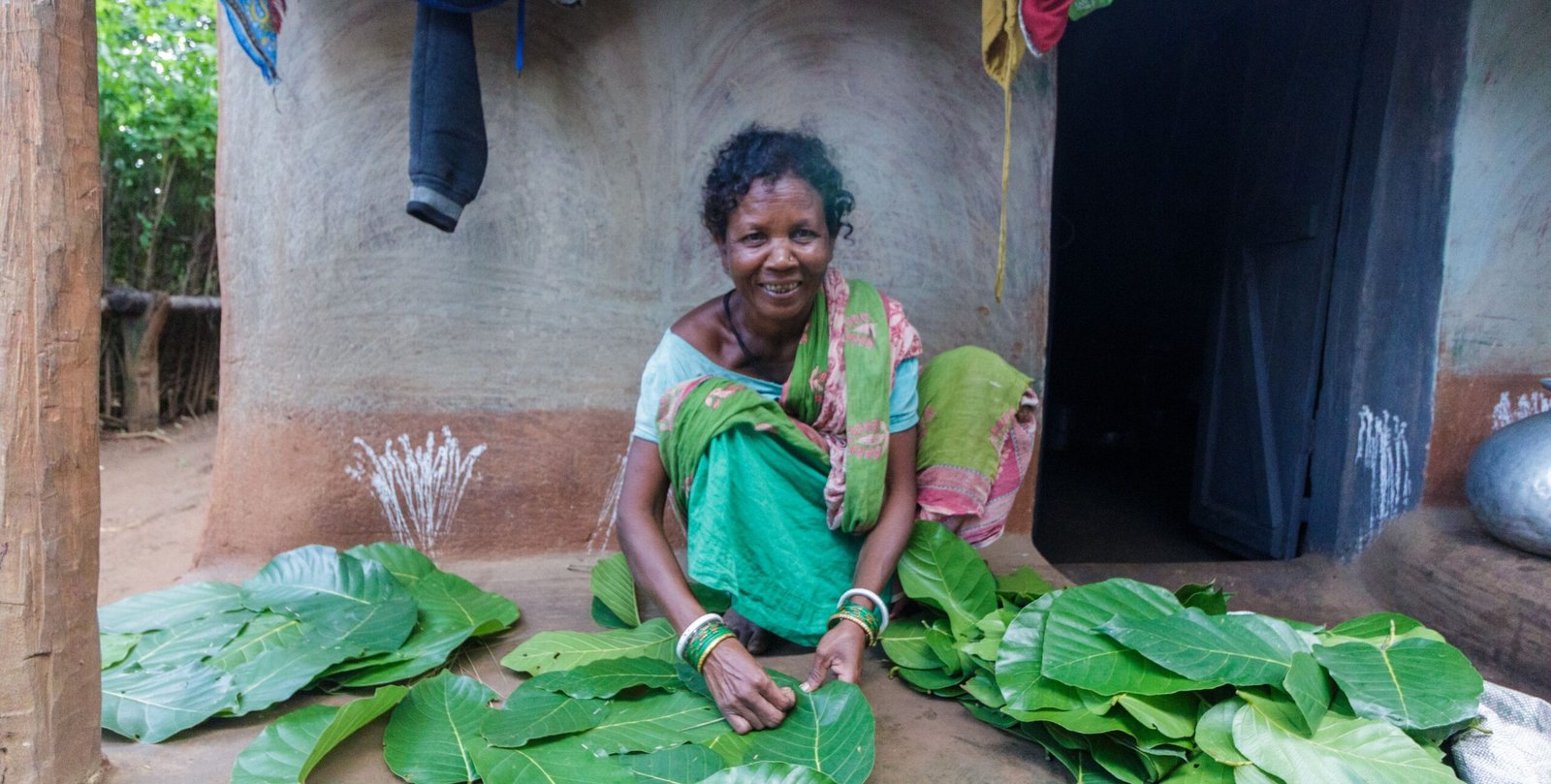INTERSECTIONALITIES

Project Report
Sustainable Livelihood
Orissa, India / 2017
Building on insights from our arecanut leaf plate manufacturing project and identifying a market demand for affordable, disposable plates in the buffet segment, we launched an innovative initiative in Rourkela and Keonjhar, Odisha along with the Odisha Forest Department. The project worked with communities traditionally skilled in sal and siali leaf plate production, leveraging their unique biocultural knowledge of sustainable forest harvesting.
We revolutionized the traditional leaf plate manufacturing process by:
– Replacing plastic interleaving with biodegradable carton material
– Developing an eco-friendly adhesive system
– Creating plates that could hold liquids for 2-3 hours
– Maintaining the traditional sewing machine technique while improving efficiency
The project established a comprehensive production line in just four months, creating multiple income opportunities:
– Leaf collection: Women from peripheral villages sustainably harvested sal and siali leaves
– Primary processing: Community members performed initial leaf stitching
– Plate manufacturing: The Producer Company operated machines for final plate production and packaging
The project’s success lay in its integration of conservation with commerce. By training communities in sustainable harvesting practices and moving them up the value chain, we created both economic incentive and responsibility for forest preservation. This led to reduced forest penetration for leaf collection, natural replenishment of siali vegetation from core to periphery and strengthened symbiotic relationship between communities and forest
The model spread across Jharkhand, Chhattisgarh, Odisha, and West Bengal, while the Producer Company grew to 296 members. 800 women received training in sal and siali leaf stitching and the Forest Department adopted and replicated the model across Odisha
The project successfully transformed a traditional practice into a sustainable enterprise model that balanced ecological preservation with economic development. By moving communities to the front of the value chain through household-based stitching operations, we created both better incomes and stronger forest stewardship.


